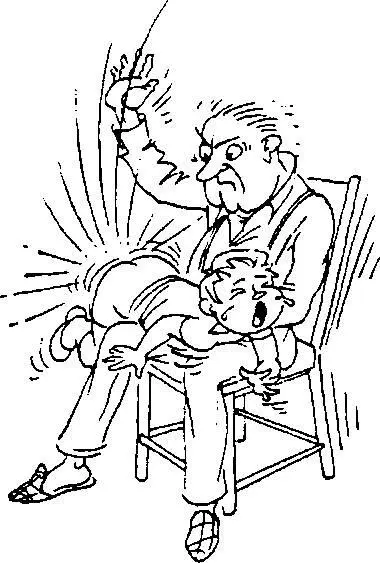Владимир Аракин - Практический курс английского языка 3 курс [calibre 2.43.0]
- Название:Практический курс английского языка 3 курс [calibre 2.43.0]
- Автор:
- Жанр:
- Издательство:ВЛАДОС
- Год:2006
- ISBN:нет данных
- Рейтинг:
- Избранное:Добавить в избранное
-
Отзывы:
-
Ваша оценка:
Владимир Аракин - Практический курс английского языка 3 курс [calibre 2.43.0] краткое содержание
I - V курсов педагогических вузов.
Цель учебника – обучение устной речи на основе развития необходимых автоматизированных речевых навыков, развитие техники чтения, а также навыков письменной речи.
Практический курс английского языка 3 курс [calibre 2.43.0] - читать онлайн бесплатно полную версию (весь текст целиком)
Интервал:
Закладка:
adaptive manoeuvres to avoid, prevent, or change the incipient threat. Feelings of guilt allow us to model our behaviour against
certain ideals and register when we have moved away from these ideals, or have not yet achieved them. If there is a common
ingredient to the various sources and forms of pleasure, the only one that can be identified is that they all seem to contribute to an
enhanced sense of self. Pleasurable events either intensify our sense of ourselves or enlarge our view of ourselves. Joy stems from an
altered sense of self and, in turn, alters our view of our world and the way we are viewed.
2. Answer the following questions:
1. How do you understand the statement "it is the feeling that counts"? 2. Why is it difficult to classify sensations and what terms
are suggested in this article? 3. How does "emotion" differ from "feeling"? 4. Do you agree that feelings are "the instruments of ra -
tionality, not alternatives to it" ? 5. How do feelings of anxiety, boredom, tension and agitation serve adoptive purposes? 6. Of what
importance are feelings of guilt? 7. What do the positive feelings have in common? 8. How do pleasurable events affect our feelings?
3. Summarize the text in two paragraphs emphasizing the importance of emotions and feelings in our life.
4. Use the Topical Vocabulary in answering the questions:
1. Why do people have emotions and feelings? What good are they? 2. What emotions and feelings are usually classified as posi-
tive and negative? Is there a strict border line between them? 3. If you have a look at the topical vocabulary list, you'll notice that it
deals with painful feelings and emotions rather than joyous ones. How can you account for it? 4. The first and simplest pleasure is
the pleasure of our senses. How can you illustrate the joys of taste, smells, sounds, and sights? 5. There are various sources of
pleasure such as discovery, the immersion of ourselves in an activity, confrontation with nature and the thrill one gets in all
cooperative effort, to mention but a few. Which of these gives you the most joyous experience? 6. It isn't always easy for us to keep
our temper when things go wrong. What do you do or say to let off steam?
7. When we don't care one way or the other about something, we can be really boring. What is the best way to make someone take an
interest?
5. Make a list of some of the things which have happened to you that really made you angry. Imagine they have all happened today. Tell your
friend about them. Use the Topical Vocabulary.
6. You have been asked to give a talk to all the students in the school about the meaning of feelings and the propriety of their public expression.
The magazines and brochures you wanted haven't arrived. The talk begins in ten minutes. You haven't prepared it well enough. You can't get out of
it now. Tell your friend.
7. There are different degrees of anger and different ways of showing it. Read the following text and comment on it:
If we could listen in on classrooms without being seen, we would hear many kinds of anger being expressed by teachers. One
teacher frequently screams and yells at her children. Another furiously bangs on his desk. A third teacher throws an eraser across the
room. Another sarcastically insults a child. One teacher grabs a child furiously and shakes him. One teacher slaps a child; anoth er
raps children on the knucles. Many angry threats are heard: "I'll show you who 'is the boss'. Don't talk to me that way." One teacher is
furiously tearing up papers, another charges back and forth across the front of the room, letting off steam.
8. The teacher can't but react emotionally to what is happening in class. Read the following text and comment on the feelings involved:
I've had to learn how free I could be. That's the hardest thing for a new teacher. At first everybody worked. I thought, man, this is
neat— everybody does what they're told. Then I thought, what a bore. It's no fun. And I got a little too free. Now I know they can
sense when I start setting my jaw even before I know I'm doing it. They know where to settle it down. The hardest thing for me was
to learn how to balance teacher control and class freedom.
9. We cannot always be bright and happy. Sometimes we have moods of depression or sadness. It's been one of those days — tell your friend
about these evSnts which have made you feel really depressed:
1.
You've lost your purse. 2. You've got to buy a present. 3. You got very wet in the rain because you left your umbrella at
home. 4. You've got an exam tomorrow and you're going to fail. 5. You've just had a row with your girlfriend (or boyfriend).
10. Have a close look at this cartoon by Bidstrupp. How do different people react to one and the same incident? What type of temperament does
their reaction reveal?


11. Very often an expression of anger on the part of children is met by punishment from parents and teachers. Enlarge on the humour of the cartoon.
'I'll teach you to hit other children.
12. Read the following dialogues. Observe the WAY PEOPLE TALK ABOUT THEIR FEELINGS:
—What's the matter? You don't look well.
— I'm rather worried.
—What about?
—My exam.
— Oh! Is that all?
— I feel very nervous.
— Don't worry about it. Try to look on the bright side of
things.
— I just can't standthat Robbins boy.
X — Millie is having one of her days, and it's driving me crazy.
—I wonder what I can make for supper tonight.
—Today is just one of those days.
—Oh, you poor thing, I had him last year, and he is impossi-
ble.
—I've made up my mind. We're going to Estonia for the holidays.
— How marvellous!
—I've got a whole month off this year!
—A whole month. That's terrific.
—We'll leave in early June.
— Good!Are we taking the bicycles?
—The bicycles? Oh no, we're going on a package tour.
—Oh no!
—And I thought we'd take aunt Ann with us.
— Oh heavens!Do we have to?
13. Work in pairs. Use clichés dealing with moods and feelings.
J o y a n d e n t h u s i a s m :
Great/That's great!
Marvellous! Terrific! Fantastic!
How wonderful! How exciting! How thrilling!
A n n o y a n c e :
How annoying! What a nuisance! What a bore! That's just what I needed! I've just about had enough of...
D i s t r e s s :
I'm worried. I just don't know what to do ...
I feel terrible. I've got a lot on my mind.
I don't feel at all happy. I'm fed up.
I can't take much more of this.
I n d i f f e r e n c e :
I can't say I'm interested.
I couldn't care less.
Please yourself.
I don't mind what you do.
The whole thing bores me to death.
R e a s s u r a n c e :
Cheer up. Take it easy.
Don't you think you're over-reacting a bit?
There's no need to get so upset.
Don't let it get you down.
It's not as bad as all that, surely?
Oh, come on, it's actually quite interesting.
I see what you mean, but on the other hand ...
1. One of your flat-mates (room-mates) is always listening to records of opera on your hi^fi. Last night it woke you up at 2 a. m.
You hate opera. Also, he/she never does his/her share of the washing-up and cleaning. Tell your friend how angry you are.
2. Your friend is late and in a bad temper. Find out what's the matter and try to calm him/her down.
3. You have a toothache. And a headache. It's Sunday. And it's pouring with rain. And your girlfriend/boyfriend has left you. You
had an argument and she/he left the city and you can't contact her/him to make it up. Tell your friend about it.
4. This time it's your friend who's depressed. Ask what's wrong and listen sympathetically. Try to cheer your friend up. Perhaps
offer some advice or suggest something to take your friend's mind off his/her problems. When your friend seems happier discuss
what you did with the rest of the class.
5. You feel fine today. It's a sunny day and you're enjoying yourself. Your friend doesn't seem so cheerful, though. Find out what
the matter is and be sympathetic.
6. Try to interest your friend in these plans: going to the cinema; spending some time studying together; reading a good book
you've just read; helping you with some shopping; watching TV this evening; going to a museum.
When you have succeeded in arousing his/her interest, discuss what you did with the rest of the class.
7. Listen to your friend's ideas and pretend to be indifferent. All your partner's plans seem really boring to you. Even talking to
other people in the class bores you to death.
14. Read the following text. Find in it arguments for accepting anger as nor mal and against it. Copy them out in two columns (I — "for", II —
"against").
Anger is Normal. Or Is It?
In terms of frequency of expression, anger is normal. It exists everywhere and is in all of us. But most teachers and parents find it
difficult to accept anger as normal and inevitable. The real issue for the teacher and parent becomes the question of how to deal with
anger in oneself.
The pressures on us to control or hide our anger are very powerful. Teachers ask, "Will this be held against me as a sign of incom-
petence or immaturity?" Other concerns are: "What will the kids tell their parents?" and "Will this get back to the principal?"
Teachers, in addition, have real concern for their children: "Will a child become frightened? Will it damage him in some way?" or,
even more upsetting, "Will the child get angry at me, become rebellious, and no longer like me as a teacher?"
These concerns are so real that most teachers try to hide their anger. The results of this are quite predictable: at best the teacher
who is straining to keep in anger is tense, irritable, and impatient; at worst the anger slips out in sarcasm or explodes in a rage of ac -
cumulated fury.
Some teachers report that they never get angry in the classroom. In further discussions with teachers regarding situations or
behaviour which typically arouses anger some teachers recognize all the signs of anger, but actually did not feel anger in the
classroom. But usually an observer or the children in the classroom recognize the signs of anger. Certain teachers are more successful
at hiding anger, but unless anger is in a mild form, it will be out one way or another,
Читать дальшеИнтервал:
Закладка:
![Обложка книги Владимир Аракин - Практический курс английского языка 3 курс [calibre 2.43.0]](/books/1072035/vladimir-arakin-prakticheskij-kurs-anglijskogo-yazyk.webp)









